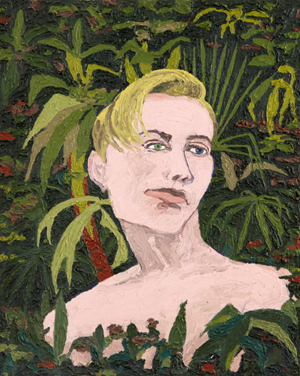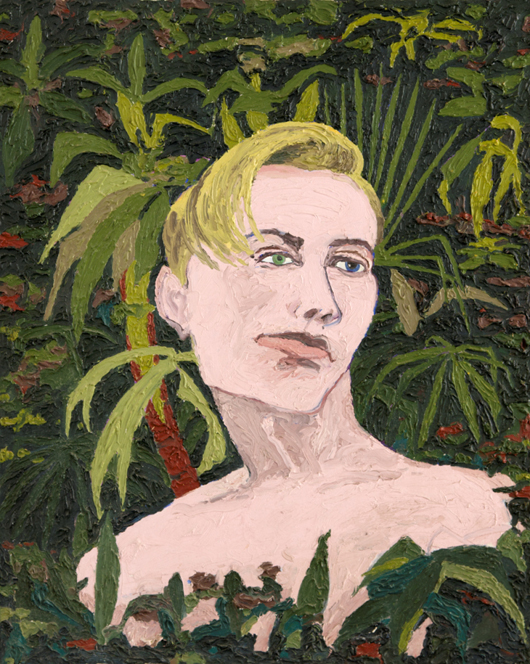
LONDON – A selection of portraits by renowned pop artist Derek Boshier will be shown in the UK for the first time in a new display of the artist’s work opening at the National Portrait Gallery on Sept. 28.
“Derek Boshier: Imaginary Portraits” (Sept. 28-May 2014) will feature 10 works from the artist’s “imaginary portraits” series, including his oil-on-canvas portrait of David Bowie, which was painted in New York in 1980 while Bowie was rehearsing for his role in Bernard Pomerance’s play The Elephant Man. Based on the life of a 19th-century man who developed severe bodily deformities and traveled as a circus performer, the production required Bowie to distort his face and body, holding poses for long periods of time. It was Bowie’s first major theater role and he received huge critical acclaim for his performance. He talked about the role with Boshier at the artist’s studio, resulting in the striking portrait of Bowie in character.
Derek Boshier (b.1937) was closely associated with the development of pop art in Britain in the early 1960s. With David Hockney, Allen Jones, Patrick Caulfield, R.B. Kitaj and Peter Phillips, he was included in the 1961 “Young Contemporaries” exhibition held at the RBA Galleries, London, that marked the appearance of the new art movement. From the outset, Boshier’s art combined social commentary with a rich imaginative element, with portraiture being an important theme throughout. He works in various media, including painting, drawing, sculpture and film.
“Derek Boshier: Imaginary Portraits” showcases an aspect of the artist’s work that involves depictions of invented people or representations of real individuals that incorporate fantasy. Early works on display include two portraits of Bowie and one of the painter Malcolm Morley, which were based on observation from life but then developed imaginatively. Later works include a series of drawings in which the artist depicts himself in a variety of different roles and contexts. The most recent work on show in the display is Black Dog (2009): a large painting that depicts a fragmented figure and represents, according to Boshier, ‘a symbol of self-identification.’
Paul Moorhouse, curator, 20th century, at the National Portrait Gallery, says: “Derek Boshier is celebrated as one of the founders of pop art in the early 1960s. But his distinctive contribution to portraiture, combining observation and fantasy, is less well known. This display explores the role of imagination in making portraits, and it illuminates Boshier’s innovatory approach to a traditional genre.’
“Derek Boshier: Imaginary Portraits” is part of the Gallery’s ongoing Interventions series of displays curated by Paul Moorhouse, which commenced in 2006 with “Andy Warhol: 10 Portraits of Jews of the 20th Century.” Drawing on significant works loaned to the Gallery, the series focuses on important 20th-century artists who have extended portraiture in innovative ways. To date, the Interventions series has included “Patrick Heron: Studies for a Portrait of T. S. Eliot,” “Bridget Riley: from Life,” “John Gibbons: Portraits;”” Frank Auerbach: Four Portraits of Catherine Lampert;” “Anthony Caro: Portraits;” “Tony Bevan – Self Portraits” and “Thomas Struth Family Portraits.”
Artist Derek Boshier will discuss his work with Moorhouse at the National Portrait Gallery on Thursday, Oct. 10.
ADDITIONAL IMAGE OF NOTE


